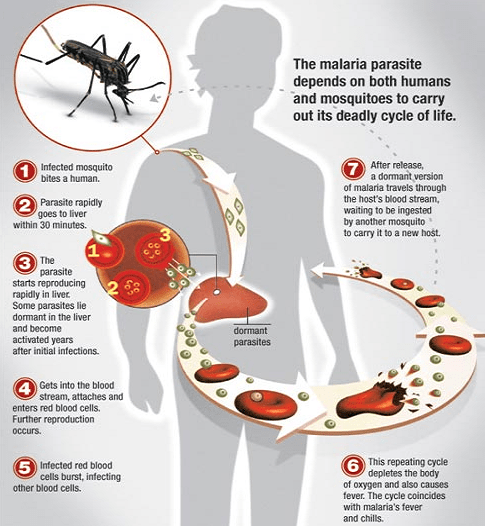Researchers Use Laser Optical Tweezers To Show How Malaria Parasite Infects RBCs
Malaria, an infectious disease spread by mosquitoes, affects hundreds of millions of people and is also responsible for a million deaths every year across the globe. It is caused when a parasite, Plasmodium falciparum, invades one red blood cell (RBC) after another and blocks the capillaries that take blood to the brain and other organs. The process of invasion and infection of the RBCs is so swift that researchers hardly get to study the infection stages. To facilitate the development of more effective drugs and vaccines for the disease, Cambridge University researchers are now using a tool called laser optical tweezers for analyzing the critical process of interaction between the parasite and red blood cells.

Credit: malariahotspots.co.uk
The most crucial stage for the survival of a parasite is the erythrocyte invasion by plasmodium merozoite which leads to pathogenesis - development of malaria. The researchers has been intensively studying the invasion process but the disease-causing parasite after infecting one RBC invades another in less than a minute and after 2-3 minutes of release, the parasite losses it’s potential to infect the cells. The researchers used laser optical tweezers because it can control the movements of cells. The precise and accurate control is done by applying very small forces with extremely focused beam of laser. The optical tweezers was used to select parasites that had just emerged from a RBC and delivered them to another blood cell. This method is useful for scrutinizing the invasion process.

Optical Tweezers delivering merozoite to a healthy erythrocyte
The researchers also tried to find out how strongly the parasites stick to the blood cells. They found that the adherence between the parasite and the RBCs is weak and can be blocked by using antibodies or drugs. Moreover, they showed how three different invasion-inhibiting drugs affect the interactions between the erythrocyte and merozoite by using this technique.

Forcible Detachment of merozoite from erythrocyte surface via Optical Tweezers
The study titled #-Link-Snipped-# was published in Biophysical Journal.
Source: #-Link-Snipped-#
Credit: malariahotspots.co.uk
The most crucial stage for the survival of a parasite is the erythrocyte invasion by plasmodium merozoite which leads to pathogenesis - development of malaria. The researchers has been intensively studying the invasion process but the disease-causing parasite after infecting one RBC invades another in less than a minute and after 2-3 minutes of release, the parasite losses it’s potential to infect the cells. The researchers used laser optical tweezers because it can control the movements of cells. The precise and accurate control is done by applying very small forces with extremely focused beam of laser. The optical tweezers was used to select parasites that had just emerged from a RBC and delivered them to another blood cell. This method is useful for scrutinizing the invasion process.
Optical Tweezers delivering merozoite to a healthy erythrocyte
The researchers also tried to find out how strongly the parasites stick to the blood cells. They found that the adherence between the parasite and the RBCs is weak and can be blocked by using antibodies or drugs. Moreover, they showed how three different invasion-inhibiting drugs affect the interactions between the erythrocyte and merozoite by using this technique.
Forcible Detachment of merozoite from erythrocyte surface via Optical Tweezers
The study titled #-Link-Snipped-# was published in Biophysical Journal.
Source: #-Link-Snipped-#
0
